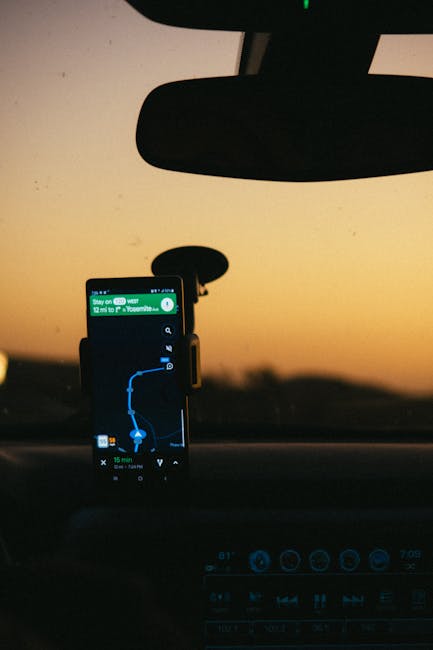Google Maps Japan: Your Ultimate Guide to Effortless Navigation

Google Maps Japan: Your Ultimate Guide to Effortless Navigation
Hey there, fellow traveler! Planning a trip to Japan? Awesome choice! Get ready for an unforgettable experience filled with delicious food, stunning scenery, and a culture that's both ancient and cutting-edge. But let's be real, navigating a foreign country, especially one where the language and writing system are completely different, can be… daunting. That's where Google Maps comes in. It's your digital compass, your pocket-sized translator, and your trusty sidekick all rolled into one. In this article, I'm going to share my personal experiences and insights on how to use Google Maps in Japan like a pro. Trust me, it's a game-changer!
Why Google Maps is Essential in Japan

Before we dive into the "how-to," let's talk about why Google Maps is so crucial for your Japanese adventure. I remember my first trip to Japan. I was relying on a combination of paper maps (remember those?) and hoping for the best. Let's just say I got lost. A lot. Google Maps would have saved me so much time and stress! Here's why:
- Accuracy: Japanese addresses can be tricky to decipher, even for locals sometimes! Google Maps pinpoints locations with remarkable accuracy, especially in urban areas.
- Public Transportation Savior: Japan boasts an incredible public transportation system, but it can be overwhelming. Google Maps integrates seamlessly with train, subway, and bus schedules, providing real-time information and detailed route planning.
- Beyond the Tourist Trail: While guidebooks are great, Google Maps allows you to explore beyond the well-trodden tourist paths and discover hidden gems that only locals know about.
- Language Barrier Buster: While knowing basic Japanese phrases is always a good idea, Google Maps helps bridge the language gap by providing translations of place names and directions.
- Offline Functionality: Roaming charges can be brutal! Downloading offline maps allows you to navigate even without a data connection, a lifesaver when you're underground or in a remote area.
Setting Up Google Maps for Japan: Before You Go

Preparation is key! Before you even board that plane, take a few minutes to set up Google Maps for a smoother experience in Japan. Here's what I recommend:
- Download Offline Maps: This is non-negotiable! Open Google Maps, tap your profile icon in the top right corner, select "Offline maps," and then "Select your own map." Zoom in on the areas you plan to visit (Tokyo, Kyoto, Osaka, etc.) and download them. This will save you from relying solely on Wi-Fi or data. Remember to update these maps periodically as information can change.
- Familiarize Yourself with the Interface: Spend some time exploring the Google Maps interface. Practice searching for locations, getting directions, and using different modes of transportation. This will make you more comfortable when you're actually on the ground in Japan.
- Learn Basic Japanese Place Names: Even if you don't speak Japanese, learning how to read and pronounce common place names like "Tokyo Station" (東京駅, Tōkyō Eki) or "Kyoto" (京都, Kyōto) will be incredibly helpful when using Google Maps and communicating with locals.
- Consider a Pocket Wi-Fi Router or SIM Card: While offline maps are great, having a data connection allows you to access real-time information, read reviews, and translate menus. A pocket Wi-Fi router or a local SIM card is a worthwhile investment.
Navigating Japan's Public Transportation with Google Maps

Okay, let's get down to the nitty-gritty. Using Google Maps for public transportation in Japan is where it really shines. I remember trying to navigate the Tokyo subway system for the first time without Google Maps. It was an absolute nightmare! Now, it's a breeze. Here's how:
- Enter Your Destination: Simply type your destination into the search bar.
- Tap "Directions": Once you've found your destination, tap the "Directions" button.
- Choose the Public Transportation Icon: You'll see icons for different modes of transportation (car, walking, public transport, etc.). Select the public transport icon (usually a train or bus).
- Explore Route Options: Google Maps will present you with several route options, including the estimated travel time, the lines you'll need to take, and any transfers required. Pay close attention to the details!
- Follow the Instructions Carefully: The instructions are usually very clear, but double-check the platform numbers and departure times. The Japanese public transportation system is incredibly punctual, so don't be late!
- Utilize Real-Time Updates: Google Maps often provides real-time updates on train delays or disruptions. Keep an eye on these updates, especially during peak hours.
Pro Tip: When using trains, look for the color-coded lines and numbered stations. This will help you confirm that you're on the right track. Also, don't be afraid to ask station staff for assistance if you're unsure. They're usually very helpful, even if there's a language barrier.
Finding Restaurants and Attractions with Google Maps

Beyond navigation, Google Maps is an invaluable tool for finding restaurants, attractions, and other points of interest in Japan. I've discovered some amazing hidden gems using Google Maps that I would have never found otherwise. Here's how to make the most of it:
- Search by Category or Keyword: Use the search bar to find specific types of restaurants (e.g., "ramen," "sushi," "izakaya") or attractions (e.g., "temples," "gardens," "museums").
- Explore the Map: Zoom in on the area you're interested in and browse the map for nearby businesses and landmarks.
- Read Reviews: Google Maps provides user reviews and ratings, which can be incredibly helpful when choosing a restaurant or attraction. Pay attention to the reviews written by locals, as they often provide the most authentic insights.
- Check Opening Hours and Contact Information: Before heading to a restaurant or attraction, always check the opening hours and contact information on Google Maps to avoid disappointment.
- Save Your Favorite Places: Create lists of your favorite places on Google Maps so you can easily find them later. This is especially useful for planning your itinerary.
Pro Tip: When searching for restaurants, try using Japanese keywords in addition to English keywords. For example, instead of searching for "ramen," try searching for "ラーメン." This will often yield more results and uncover hidden local favorites.
Overcoming Challenges: Addressing Concerns and Potential Issues

While Google Maps is incredibly helpful, it's not perfect. There are a few challenges you might encounter when using it in Japan. Here's how to overcome them:
- Address Discrepancies: Japanese addresses can be complex and often don't follow a linear numbering system. Google Maps may not always pinpoint the exact location, especially in older neighborhoods. In these cases, try using cross streets or nearby landmarks to help you find your destination.
- Indoor Navigation Limitations: Google Maps' indoor navigation capabilities are still limited in Japan. Don't rely on it for navigating large train stations or shopping malls. Instead, look for signage and information booths.
- Language Barrier in Reviews: While Google Translate can help, some reviews may still be difficult to understand if they're written in Japanese. Try to focus on the overall rating and look for keywords like "delicious," "friendly," or "authentic."
- Data Coverage Issues: While data coverage is generally good in Japan, you might encounter dead spots in rural areas or underground. This is where offline maps come in handy!
- Battery Drain: Using Google Maps extensively can drain your phone's battery quickly. Make sure to bring a portable charger or power bank with you.
Beyond the Basics: Advanced Google Maps Tips for Japan

Ready to level up your Google Maps game? Here are a few advanced tips and tricks that can enhance your navigation experience in Japan:
- Use Google Lens for Real-Time Translation: Google Lens, integrated within Google Maps, allows you to translate text in real-time using your phone's camera. This is incredibly useful for translating menus, signs, and other documents.
- Explore Street View: Before visiting a location, use Street View to get a visual preview of the area. This can help you orient yourself and identify landmarks.
- Contribute to Google Maps: If you discover a new restaurant or attraction, consider adding it to Google Maps. This will help other travelers find it in the future.
- Customize Your Map: You can customize your Google Maps display by changing the colors, adding labels, and adjusting the zoom level.
- Download Additional Map Apps: While Google Maps is my go-to choice, consider downloading other map apps like Japan Official Travel App. Some of these apps may offer features that are not available on Google Maps.
Personal Anecdotes: My Google Maps Adventures in Japan

Let me share a couple of personal anecdotes to illustrate how Google Maps has saved the day during my trips to Japan:
The Hidden Ramen Gem: I was wandering around Osaka, feeling hungry and craving some authentic ramen. I used Google Maps to search for "ramen" in Japanese (ラーメン) and stumbled upon a tiny, unassuming shop tucked away in a side street. The reviews were glowing, so I decided to give it a try. It turned out to be the best ramen I've ever had! I would have never found it without Google Maps.
The Unexpected Train Delay: I was on my way to Mount Fuji by train when I received a notification on Google Maps that there was a significant delay due to a track obstruction. Google Maps suggested an alternative route involving a combination of buses and trains. Thanks to this real-time information, I was able to adjust my plans and still make it to Mount Fuji before sunset.
Final Thoughts: Embrace the Digital Compass

Navigating Japan can be challenging, but with Google Maps as your trusty companion, it becomes a much more manageable and enjoyable experience. Embrace the digital compass, explore with confidence, and get ready to create unforgettable memories in the Land of the Rising Sun! Don't be afraid to get a little lost (within reason, of course!), but always know that Google Maps is there to guide you back on track. Safe travels!
Remember to download those offline maps, familiarize yourself with the interface, and learn a few basic Japanese phrases. With a little preparation and a dash of adventure, you'll be navigating Japan like a local in no time. And most importantly, have fun!
Post a Comment